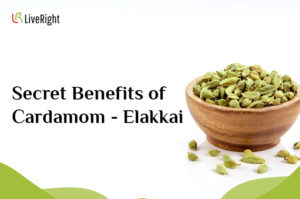Last updated on August 21, 2024 by Dr. Subashri Thanigaivel
Ayurveda has Healthy Alternatives
Sugar is all around us, some of it is hidden and some of it is very obvious. Ancient Ayurvedic Wisdom has regarded sweet to be one of our six essential tastes. Sweet taste is very balancing for our meals and nourishes our mental, emotional and physical health. Once we consume sweet foods, they get converted to fine sugars and are stored in our body as fuel. Liver and muscles are the biggest warehouses of sugar where it is stored as glycogen. The sweet taste comes from grains, dairy, fruits, starchy vegetables, and honey. However, the source of sweetness today has changed, which is the crux of the issue today. Where are we getting our sweetness from? What is the best source? Do certain sources have particular health implications?

Sweet taste naturally resides in unrefined and unadulterated grains, dairy, fruits, and vegetables. In these forms, sugar is attached to fiber, with lots of phytonutrients and is in complex form. Humans want the purest form of sugar and that is where all health problems start. When sugar is consumed in naturally occurring substances, the body’s intelligence knows how to process and handle it; it becomes more nourishing than detrimental to our overall health. Mankind has had a long relationship with sugarcane. Although man’s use of honey predates it, sugarcane was in use in India before 400 B.C. Alexander the Great wrote about a grass which produced honey without the presence of bees.
Unfortunately, what our society today recognizes as sugar is refined, processed forms and its by-products, which are highly addictive and set us up for cravings. The danger seems to be that, due to its overwhelming appeal to the human taste buds, we eat it in excess–often displacing other more nutritious foods from the diet.
The most common form of sweetener consumed by the society is refined white sugar which is highly concentrated and stripped off all the essential nutrients. Now, there is fear around the consumption of refined white sugar and a search for Natural Alternatives. Popular alternatives are Palm Sugar and Jaggery.
What is Palm Sugar?

Palm sugar is a sweetener that is made from the sap present in the flower buds of the coconut palm tree. It is a natural sugar because it involves minimum processing without using chemicals. The sugar has a mild caramel flavour and in its liquid form resembles honey whereas in the granular state, it is not much different in taste as compared to white sugar. It is used in m16aking curries, sauces and desserts.
One of the biggest reasons of the popularity of palm sugar is due to its low glycemic index (GI). GI of palm sugar is 35, compared to honey at 55 and table sugar at 68. But let’s not forget that palm sugar is still a sweetener. GI varies from person to person and also depends on how the food is cooked and with what it is eaten. In comparison to other forms of sugar, palm sugar is no doubt a better alternative and that definitely doesn’t mean that one should overindulge, using heaps of it in beverages, cereals and desserts.
Jaggery: A Healthy Choice

For centuries, jaggery has been used throughout India as a healthy sweetener. Jaggery actually comes from the sap of either the sugarcane plant or from several species of sugar palm trees. To convert the sap into jaggery, simple evaporation or crude centrifugation is the only process. The process generally happens without using any chemicals or bleaches. It is then simply poured into molds to form small cakes.
Jaggery, also known as guda, has a mineral content of approximately 60 times that of refined white sugar. One teaspoon of jaggery contains approximately 4-5 mg calcium, 2-3 mg phosphorus, 8 mg magnesium, 48 mg potassium, 0.5 mg iron, as well as trace amounts of zinc, copper, thiamin, riboflavin, and niacin. The corresponding values for white sugar are all essentially zero.
Purified Guda does not increase Kapha to a large extent, increases the volume of urine. It has cooling property and is useful in burning sensation, thirst, vomiting, fainting and bleeding diseases.
Jaggery is more complex than sugar and hence takes more time for digestion. Due to this, upon digestion of jaggery, the energy released is slower when compared to sugar. Sugar gets absorbed into the blood easily increasing the blood sugar levels very quickly. Though jaggery is a healthy substitute for sugar, people with diabetes should consult a doctor as it will ultimately increase blood sugar levels.
Types of Sugars
The main difference between the Ayurvedic view and the western view on sugar intake is that Ayurveda acknowledges the differences between sugars. For example, honey is sweet and heating, and it pacifies Vata and Kapha while increasing Pitta. Jaggery is sweet and cooling has a heavy, strengthening effect on the body, and pacifies Vata while increasing Pitta and Kapha. White sugar, on the other hand, is sweet, heating, and has a stimulating effect on the body aggravating all of the doshas (Vata, Pitta and Kapha).
Less processed sugars like jaggery, honey and maple syrup are more Sattvic, having a peaceful effect on our minds. Highly processed sugars like white sugar and synthetic replacement sweeteners, on the other hand, are Rajasic and Tamasic – creating strong outward-seeking desire combined with dullness, depression and ignorance in the mind.
From an Ayurvedic perspective, it is important that you get to know your sugars! Whenever possible, choose more natural sugars over their highly processed counterparts. And as far as sugar-elimination diets go, unless there is a medical necessity, from an Ayurvedic perspective, we need to consider long-term moderation combined with well-timed and precise restraint rather than radical and restrictive elimination approaches.
Get Free Consultation With Top Ayurvedic Doctor
Sources : Food NDTV, Yogabasics



